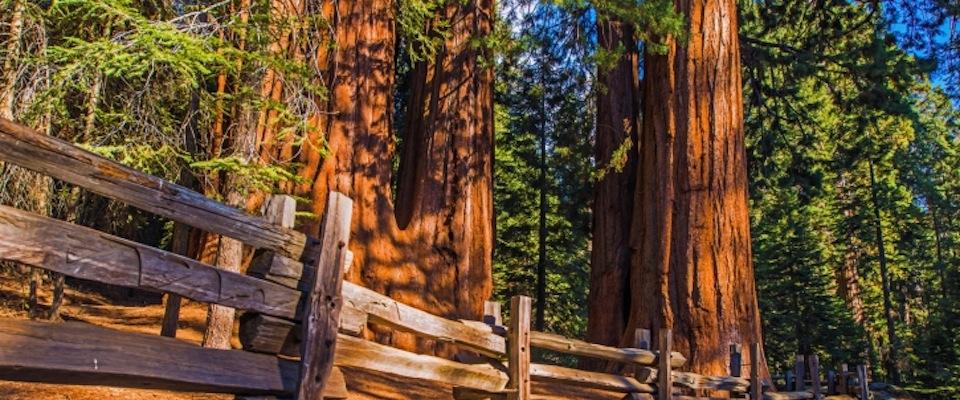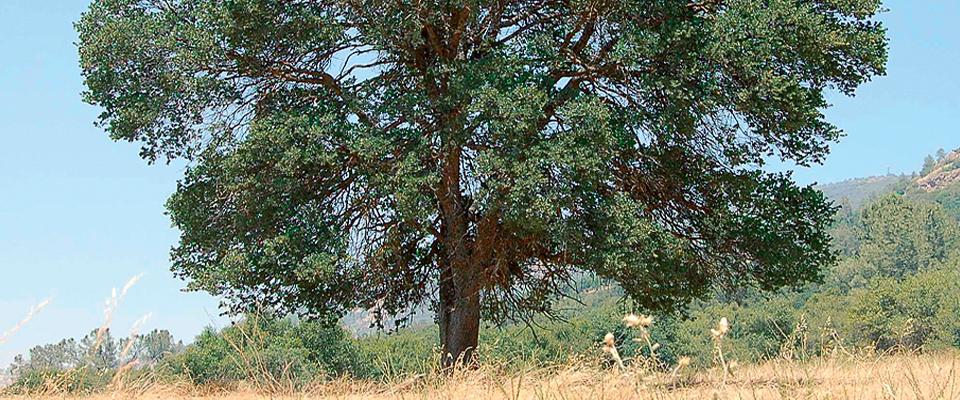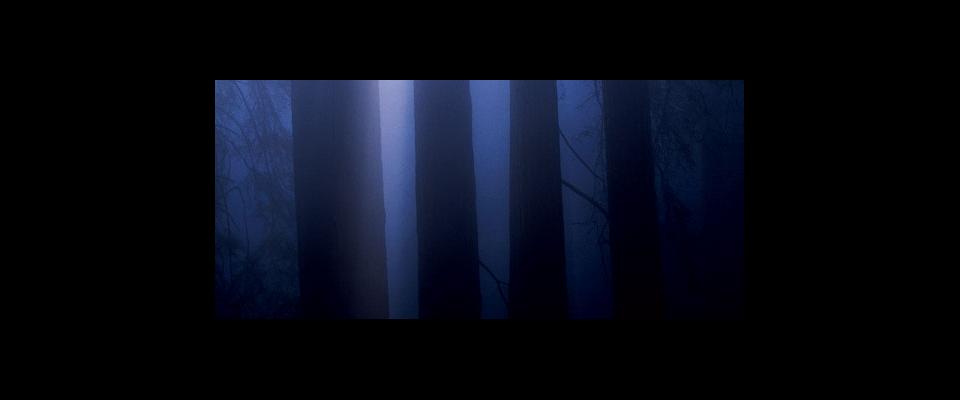Ronald Reagan was (in)famously unmoved by ancient forests, claiming that “when you’ve seen one redwood, you’ve seen them all.” But most of us still feel a frisson when we stroll among old-growth trees, particularly when they’re the biggest dang trees on the planet: Sequoiadendron giganteum, otherwise known as giant sequoias. (That’s biggest by volume, by the way. Coast redwoods, Sequoia sempervirens, may be taller but typically are more slender.)

Coast redwoods are distributed fairly thickly in a 15-to-20-mile wide strip along the California littoral from Big Sur to the Oregon border. Giant sequoias, on the other hand, are scattered among 75 groves on the west slope of the Sierra Nevada, and that presents some unique conservation challenges. If we are going to preserve these magisterial trees, as Save the Redwoods League conservation science manager Richard Campbell has observed, we only have 75 chances to get it right.
The situation is especially crucial in the northern range of the giant sequoia. Recent research by UC Berkeley professor of Environmental Science, Policy and Management Richard Dodd confirms that trees in the eight northernmost groves are genetically truncated when compared to trees in the south.
“The northern groves are more isolated from each other than the southern groves,” says Dodd. “In the south, the groves are almost continuous in some places. As a consequence, there has been much less genetic exchange (among trees) in the north than in the south. The northern trees are not only genetically distinct from the southern trees (when the two groups are compared). Each northern grove also is distinct from every other northern grove.”
The northern groves are thus diverging genetically—from the southern groves, and from each other. If this process continued through deep time, as scientists characterize very long periods, speciation could result: The northern and southern trees could evolve into separate species.
That’s unlikely to happen, says Dodd, “but our work does show there is less genetic diversity in the northern groves. On, the one hand, that’s not surprising. Small populations (of a given organism) usually show less genetic diversity than larger populations. But in the case of giant sequoias, it also shows we have to be very careful with our management strategies. We have unique genetic combinations in the north that we might want to take particular effort to preserve. We don’t know the benefits they might confer in the future.”
The future Dodd alludes to, of course, is one in which climate change is accelerating. (In other words, the future that now seems disturbingly like our drought-blighted present.) If, as seems likely, temperature and precipitation patterns shift over the coming decades and centuries to the warmer and drier end of the spectrum, giant sequoias may find they need to migrate longitudinally (north) or in elevation (higher) to survive. And this may require direct human intervention, such as people planting trees.
And that raises the question: What trees to plant? And where? In a warmer and drier Sierra Nevada, it could well be that trees from the southern groves would do better in north grove sites than extant north grove trees. And northern grove trees would have to shift northward to find conditions their genetics would deem suitable.
How far north?
“We’ve just begun researching that question—how far north the giant sequoia range might extend (under various climate change models),” Dodd says. “Off the top of my head, I think we might be looking at 200 to 300 kilometers.”
But Dodd cautions there is an implicit risk in trying to match specific giant sequoia genotypes with changing climatic conditions. There is, after all, the Law of Unintended Consequences to consider.
“It could be that current northern grove sites could benefit from an injection of southern grove genes,” muses Dodd. “At a certain point, the northern sites could be (climatically) similar to the southern sites of today. But there are very real ethical issues to take into account when you start shifting things around.”
Dodd cites eucalyptus as an example of good intentions going wrong in the moving-stuff-to-alien-soil realm.
“Eucalyptus was considered a useful and attractive tree, and it was planted widely throughout California,” he says. “Now it’s viewed as a stubborn invasive that threatens native species. It’s possible that transplanting giant sequoias from one area to another ultimately could be part of a sound conservation program. But it should be a last resort. Once you start moving genes around, it’s difficult or impossible to reverse the process. The good thing is that giant sequoias are mostly in national parks and protected forest lands, so we have the basic framework for long-term protection already established. We just need to proceed carefully with management.”





















